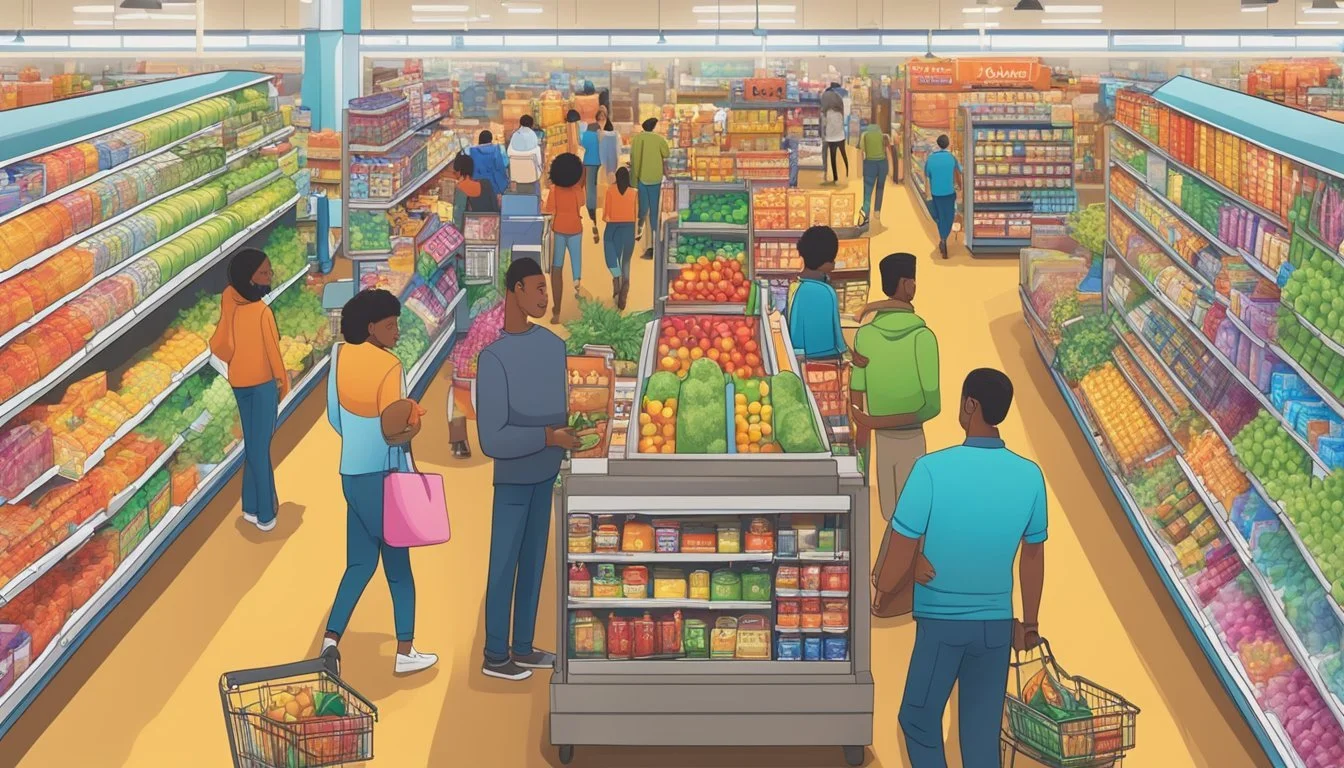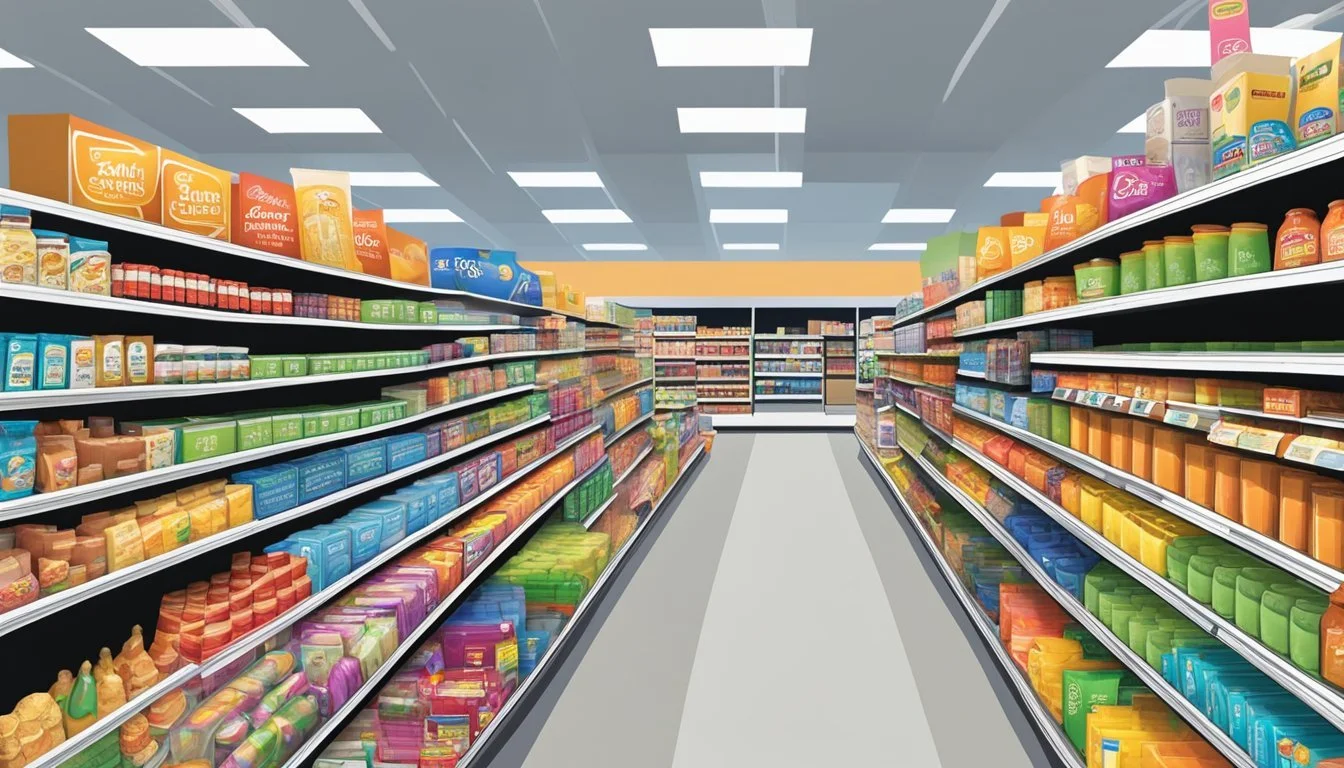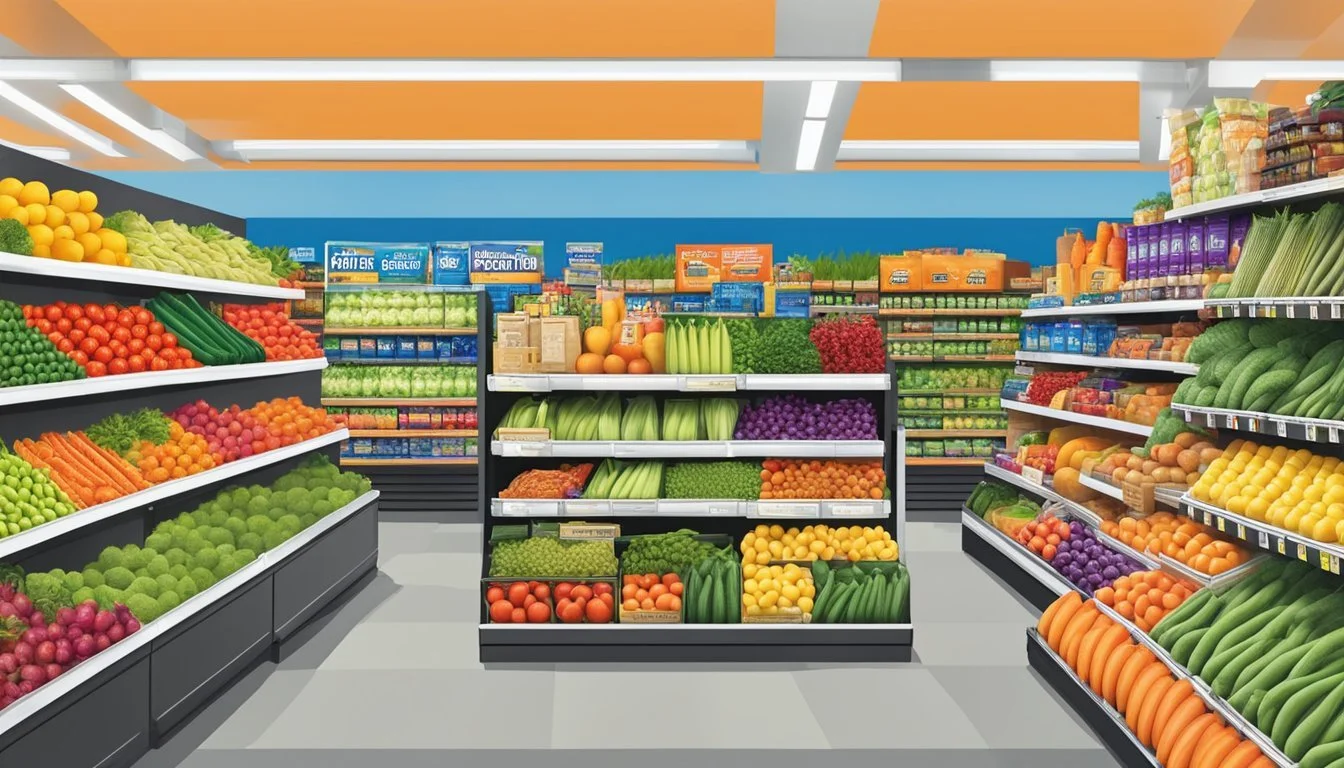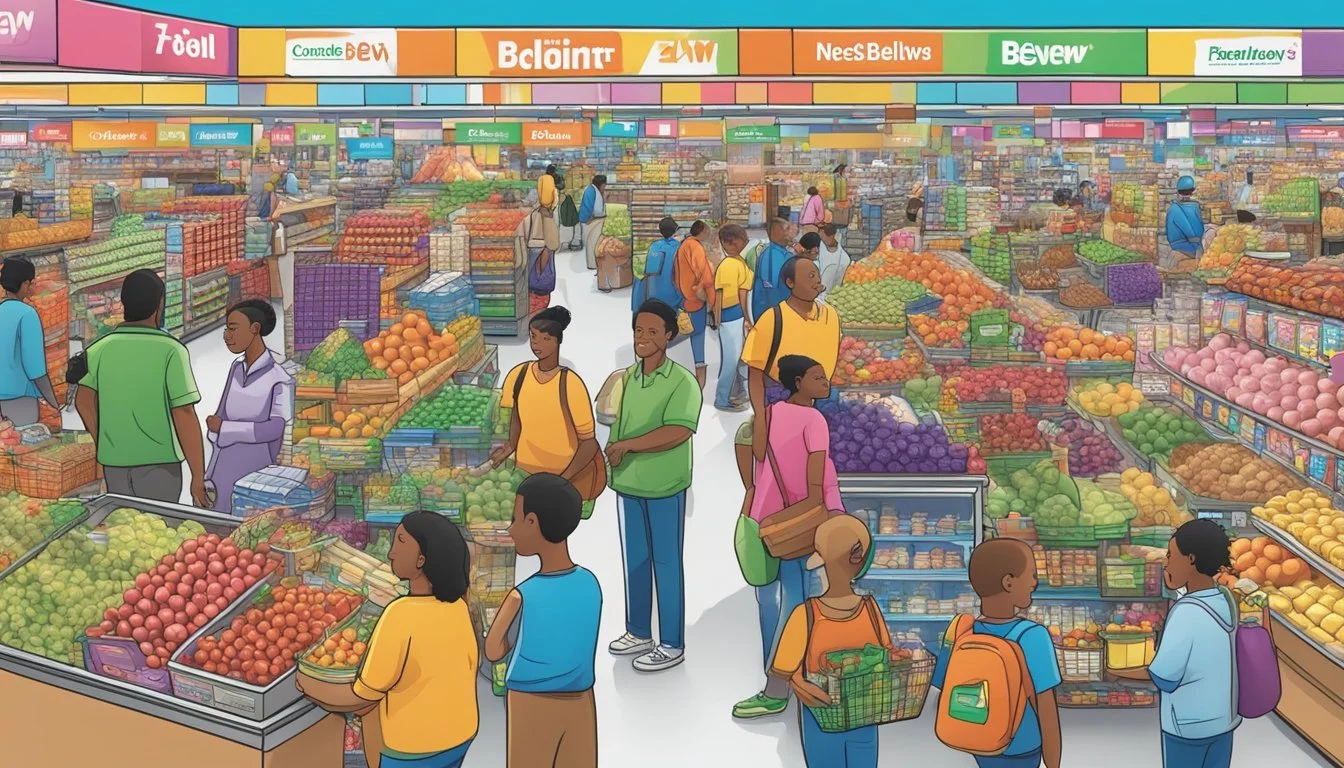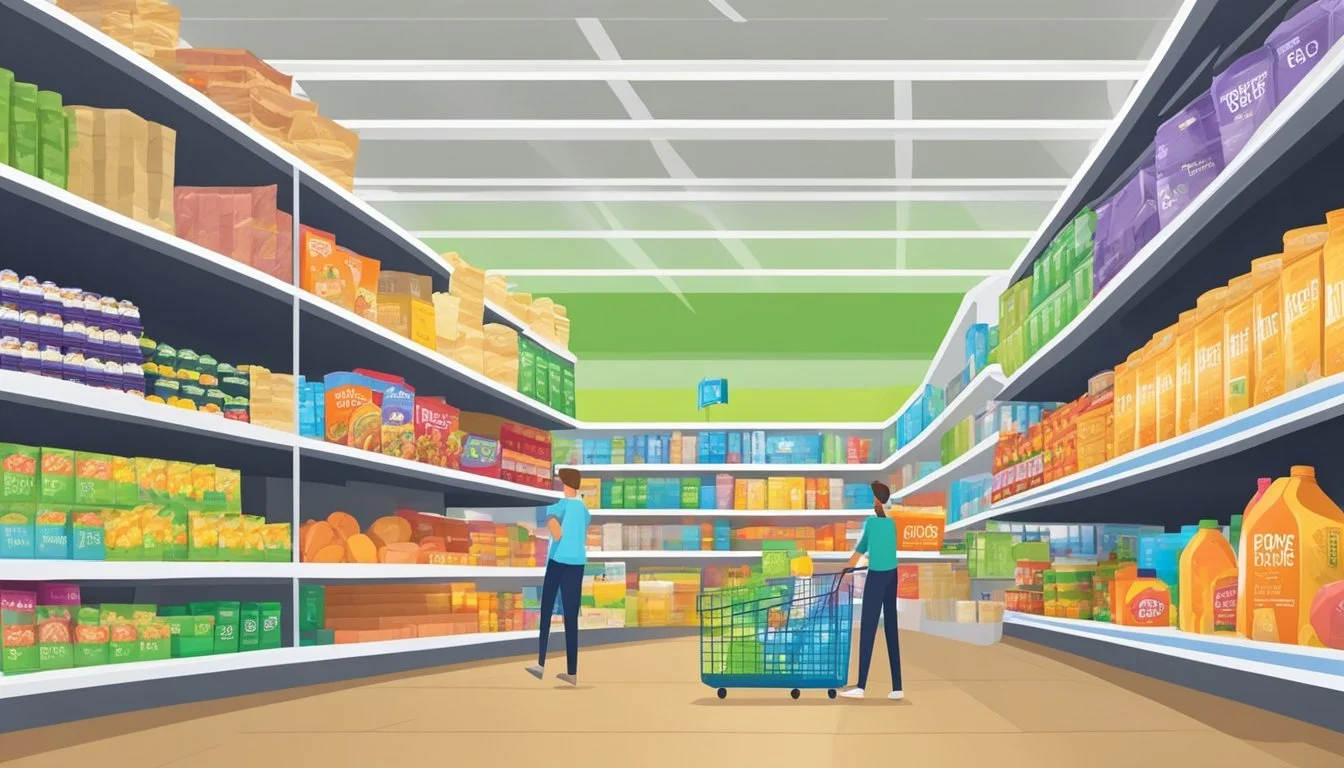Five Below vs Walmart
A Price and Quality Comparison
Five Below and Walmart are both popular retail chains known for offering affordable products to consumers. While Five Below focuses on items priced at $5 or less, Walmart provides a wider range of groceries and household goods at competitive prices.
Both stores offer significant savings compared to traditional supermarkets, with Walmart's prices typically 13-19% lower than average grocery store prices. This price difference can result in substantial annual savings for families, potentially up to $2,300 per year for those spending $250 weekly on groceries.
Despite their different target markets, Five Below and Walmart share a commitment to value-conscious shoppers. Five Below plans to expand rapidly, aiming to triple its store count by 2030 and double earnings by 2025. Walmart, meanwhile, continues to innovate with new product lines like its recently announced grocery offerings priced between $2 and $15, with most items under $5.
Company Overviews
Walmart and Five Below represent two distinct approaches to retail. Both have experienced significant growth and expansion, but their strategies and market positions differ considerably.
History and Expansion of Walmart
Walmart began as a single discount store in Rogers, Arkansas in 1962. Founded by Sam Walton, the company rapidly expanded across the United States. By 1988, Walmart entered the grocery market, transforming into a superstore format.
The retailer now operates over 11,000 stores globally. Walmart's "Everyday Low Prices" strategy has made it a dominant force in retail and groceries. In recent years, the company has invested heavily in e-commerce to compete with online retailers.
Walmart's grocery offerings include a wide range of products, from fresh produce to packaged goods. The company has also introduced its own private label brands to provide value-oriented options for customers.
Five Below's Rise in the Retail Market
Five Below, founded in 2002 by David Schlessinger and Tom Vellios, took a different approach to retail. The company focuses on selling trendy products for $5 or less, targeting teens and pre-teens.
Five Below has experienced rapid growth since its inception. The retailer plans to triple its store count by 2030 and double its earnings by 2025. This aggressive expansion indicates significant market potential.
Unlike Walmart, Five Below does not primarily focus on groceries. Instead, it offers a rotating selection of toys, tech accessories, beauty products, and seasonal items. The company's unique pricing strategy and product mix have helped it carve out a distinct niche in the retail landscape.
Product Range and Availability
Walmart and Five Below offer distinct product ranges, catering to different consumer needs. Walmart provides a comprehensive grocery selection, while Five Below focuses on trendy, affordable items.
Walmart's Product Diversity
Walmart boasts an extensive grocery selection. The store carries a wide variety of produce, including fresh fruits and vegetables. Walmart's meat department offers diverse options, from poultry to beef and pork. The deli section features prepared foods and sliced meats and cheeses.
Walmart's frozen food aisle is well-stocked with convenient meal options. The store carries numerous national brands alongside its own Great Value store brand. Organic produce is available, though selection may vary by location.
Walmart's size allows it to stock a broad range of products, from everyday essentials to specialty items. This diversity makes it a one-stop shop for many customers.
Five Below's Specialty Selection
Five Below takes a different approach, specializing in trendy, low-cost items. While not primarily a grocery store, Five Below does offer some food products. Their selection focuses mainly on snacks, candy, and beverages.
Five Below's food offerings are limited compared to traditional grocers. They stock popular brands of chips, cookies, and soft drinks. The store also carries some frozen treats and novelty candies.
Five Below's strength lies in its rotating selection of trendy items. This includes seasonal foods and limited-time offerings. While not comprehensive, Five Below's food selection appeals to budget-conscious shoppers looking for fun, affordable treats.
Price Comparison
Walmart and Five Below employ distinct pricing strategies to attract customers. Their approaches differ significantly in terms of product selection and target price points.
Walmart's Pricing Strategy
Walmart focuses on offering everyday low prices across a wide range of groceries and household items. The retail giant leverages its massive scale and efficient supply chain to keep costs down. Walmart's grocery prices are typically 4-8% lower than competitors like Kroger.
For staple items, Walmart often beats other major grocery chains. A basket of common groceries at Walmart can cost 2.7-5.8% less than at competing stores, depending on the region. Walmart's "Great Value" store brand provides additional savings on many products.
Five Below's Value Proposition
Five Below takes a different approach, selling items for $5 or less. The store targets younger shoppers with trendy, affordable merchandise. While not primarily a grocery retailer, Five Below offers some food and snack options.
Five Below's selection is more limited than Walmart's full grocery offerings. The $5 price cap restricts the types of food items available. Five Below focuses on packaged snacks, candy, and drinks rather than fresh produce or meat.
For specific items in their price range, Five Below can offer competitive deals. However, their narrow focus makes direct price comparisons with Walmart's full grocery selection difficult.
Store Experience and Layout
Walmart and Five Below offer distinct shopping environments tailored to their product offerings and target customers. Each store's layout and design influences the overall experience for shoppers.
Navigating Walmart's Aisles
Walmart stores feature wide, well-lit aisles organized by product categories. The grocery section typically occupies a large portion of the store, with fresh produce near the entrance.
Walmart's layout aims to maximize efficiency for shoppers. Clear signage helps customers locate items quickly.
Many Walmart locations are implementing a reimagined store design. This update includes new fixtures, lighting, and digital displays to enhance the shopping experience.
The checkout area often includes both staffed registers and self-checkout options. Some stores are integrating automation to streamline the checkout process.
Shopping at Five Below
Five Below stores have a more compact layout compared to Walmart. The aisles are narrower but still allow for easy navigation.
Products are organized into themed sections, often with eye-catching displays. Bright colors and bold signage create an energetic atmosphere.
The store layout encourages browsing and discovery. New items are frequently rotated, keeping the shopping experience fresh.
Checkout areas in Five Below are typically located at the front of the store. The number of registers may be limited compared to Walmart, reflecting the smaller store size.
Five Below's layout caters to impulse purchases and treasure-hunt style shopping. This design aligns with their focus on trendy, affordable items.
Quality and Freshness of Products
Product quality and freshness are key factors when comparing grocery stores. Walmart and Five Below take different approaches to sourcing and stocking perishable and shelf-stable items.
Walmart's Fresh Produce and Meat
Walmart focuses on providing a wide selection of fresh produce and meats at competitive prices. The retail giant sources fruits and vegetables from both local and national suppliers. Many Walmart stores feature an expanded produce section with organic options.
Walmart's meat department offers various cuts of beef, pork, chicken, and fish. The company has invested in improving its cold chain logistics to maintain product freshness. Some locations have in-store butchers to provide custom cuts.
Quality control measures are in place to ensure produce meets standards for appearance and ripeness. Walmart also implements a rotation system to remove older items from shelves.
Five Below's Approach to Quality
Five Below takes a different approach to grocery offerings. As a discount retailer, their focus is primarily on non-perishable snacks and drinks. The store does not typically stock fresh produce or meats.
Five Below's food items are often popular name brands or private label alternatives. The company emphasizes value, with most products priced at $5 or less. Quality standards focus on shelf stability and packaging integrity rather than freshness.
Snack options may include chips, candy, and packaged baked goods. Beverage selections typically feature sodas, energy drinks, and bottled water. Five Below rotates seasonal food items to keep their selection current.
Locations and Convenience
Walmart and Five Below have distinct strategies for store locations and accessibility. Their approaches impact customer convenience and shopping experiences in different ways.
Accessibility of Walmart Stores
Walmart boasts an extensive network of stores across the United States. The retail giant operates over 4,700 locations nationwide, including Supercenters, Neighborhood Markets, and Sam's Club warehouses. This widespread presence allows Walmart to serve both urban and rural communities effectively.
Most Walmart stores are open 24/7, providing customers with round-the-clock access to groceries and household essentials. The company strategically places its stores near major highways and in densely populated areas for easy access.
Walmart's large parking lots accommodate high customer volumes, making it convenient for shoppers to visit at any time. Many locations also offer additional services like pharmacies, auto centers, and vision centers, increasing the one-stop-shop appeal.
Five Below's Location Strategy
Five Below focuses on a more targeted approach to store locations. The discount chain operates over 1,000 stores across the United States, primarily in shopping centers and strip malls.
Five Below tends to choose locations in high-traffic retail areas, often near other popular stores. This strategy aims to capitalize on existing foot traffic and attract budget-conscious shoppers.
Unlike Walmart, Five Below stores typically have smaller footprints and more limited operating hours. Most locations are open from 10 AM to 9 PM, with slightly extended hours on weekends.
Five Below's expansion strategy targets suburban and urban areas with a focus on demographics that align with their core customer base of teens and young adults. This approach allows the company to maintain a strong presence in key markets while continuing to grow strategically.
Customer Perceptions and Brand Image
Walmart and Five Below have carved out distinct positions in the retail landscape. Their brand images and customer perceptions differ significantly, shaped by their pricing strategies, product offerings, and target demographics.
Walmart's Market Positioning
Walmart has built its reputation on offering low prices across a wide range of products. Shoppers often associate the brand with affordability and convenience. The retail giant's massive scale allows it to negotiate better deals with suppliers, passing savings on to customers.
Consumer research shows that many view Walmart as a one-stop shop for household essentials, groceries, and general merchandise. However, some associate the brand with lower quality goods and a no-frills shopping experience. Walmart has worked to improve its image in recent years, investing in store renovations and expanding its online presence.
Five Below's Brand Perception
Five Below has cultivated a unique brand image centered on fun, trendy products at budget-friendly prices. The store appeals to younger shoppers, particularly tweens, teens, and young adults. Its bright, colorful stores and ever-changing inventory create an exciting treasure hunt atmosphere.
Consumerpedia ratings indicate that customers appreciate Five Below's focus on affordable novelty items and seasonal products. The brand is often perceived as a destination for impulse purchases and small gifts. Five Below's rapid expansion plans suggest growing popularity among budget-conscious shoppers seeking low-cost trendy items.
Unlike Walmart, Five Below isn't typically seen as a primary shopping destination for everyday essentials. Instead, it occupies a niche as a specialty retailer offering a curated selection of low-priced merchandise.
Additional Services and Programs
Walmart and Five Below offer unique extras beyond their core retail offerings. These additional services and programs aim to enhance the shopping experience and provide more value to customers.
Walmart's Extra Offerings
Walmart+ provides members with numerous perks. Free grocery delivery is available for orders over $35, rivaling Amazon Prime's delivery options. Members also enjoy free shipping on Walmart.com purchases without order minimums.
Walmart's pickup service allows customers to order online and collect items from their local store. The retailer's hot food section offers ready-to-eat meals and snacks for shoppers on the go.
Fuel discounts at participating gas stations are another Walmart+ benefit. Members can save up to 10 cents per gallon at Walmart, Murphy, Exxon, and Mobil locations.
Walmart+ also includes a Scan & Go feature for in-store shopping. This allows customers to scan items with their smartphones and check out quickly, bypassing long lines.
Five Below and Beyond the Basics
Five Below focuses on providing trendy, affordable products rather than extensive services. However, the retailer has introduced some additional offerings to enhance customer experience.
Five Below's website offers online shopping with home delivery options. While not as comprehensive as Walmart's delivery services, it provides convenience for customers who prefer to shop from home.
The retailer frequently runs special promotions and events in-store. These may include product demonstrations, giveaways, or exclusive deals for loyalty program members.
Five Below has expanded its product range to include items priced up to $10 in some stores. This "Ten Below" section allows the retailer to offer a wider variety of products while maintaining its focus on value.
Market Competition and Alternatives
The grocery retail sector is highly competitive, with numerous players vying for market share. Walmart and Five Below face stiff competition from various established chains and emerging alternatives.
Competitors in the Marketplace
Walmart contends with major grocery chains like Kroger, Albertsons, and Publix. Discount retailers such as Aldi and Lidl challenge Walmart's low-price strategy. Target competes in both general merchandise and groceries. Warehouse clubs like Costco and Sam's Club offer bulk buying options. Amazon's acquisition of Whole Foods intensified competition in the premium and organic segment.
Five Below, while not primarily a grocery retailer, competes with dollar stores and discount chains. Its unique $5-and-below concept sets it apart, but it faces competition from Dollar General, Dollar Tree, and similar value-focused retailers.
How Walmart and Five Below Stand Out
Walmart distinguishes itself through its vast network of stores, wide product selection, and competitive pricing. Its Walmart+ subscription service offers free grocery deliveries, rivaling Amazon Prime. Walmart's omnichannel approach integrates in-store, pickup, and delivery options.
Five Below stands out with its focus on trendy items for teens and pre-teens at $5 or less. While not a full-service grocery store, it offers snacks, candy, and beverages. Five Below's rapid expansion plans and unique positioning in the retail landscape differentiate it from traditional grocers and discount chains.
Both retailers leverage technology and data analytics to optimize inventory and enhance customer experiences. Walmart's scale allows for significant cost advantages, while Five Below's niche appeal drives customer loyalty in its target demographic.
Conclusion
Five Below and Walmart offer distinct shopping experiences for grocery buyers. Walmart provides a vast selection of products at competitive prices, making it a go-to for many households seeking affordability and variety.
Five Below, while not primarily a grocery store, offers unique value in select food categories. Its planned expansion suggests growing appeal among budget-conscious shoppers looking for deals on snacks and pantry items.
Walmart's scale allows for lower prices on many groceries compared to other major chains. Its private label offerings, like the Marketside brand, often provide good quality at reduced costs.
For fresh produce and organic options, Walmart has made strides but may not match the reputation of specialty grocers. Five Below's limited grocery selection focuses more on shelf-stable and novelty items.
Ultimately, the choice between Five Below and Walmart for groceries depends on individual needs. Walmart serves as a comprehensive grocery destination, while Five Below can supplement shopping trips with budget-friendly treats and basics.

